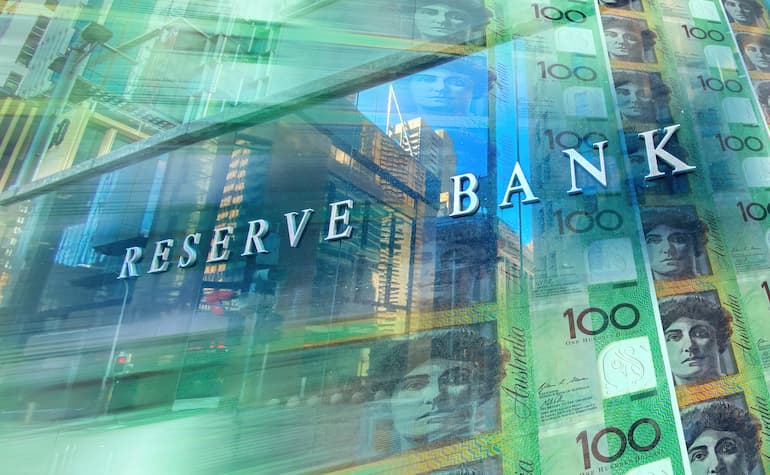Berita & analisis pasar
Tetap selangkah lebih maju di pasar dengan wawasan ahli, berita, dan analisis teknikal untuk memandu keputusan trading Anda.

Multi-Timeframe (MTF) analysis is not just about checking the trend on the daily before trading on the hourly; ideally, it involves examining and aligning context, structure, and timing so that every trade is placed with purpose.
When done correctly, MTF analysis can filter market noise, may help with timing of entry, and assist you in trading with the trending “tide,” not against it.
Why Multi-Timeframe Analysis Matters
Every setup exists within a larger market story, and that story may often define the probability of a successful trade outcome.
Single-timeframe trading leads to the trading equivalent of tunnel vision, where the series of candles in front of you dominate your thinking, even though the broader trend might be shifting.
The most common reason traders may struggle is a false confidence based on a belief they are applying MTF analysis, but in truth, it’s often an ad-hoc, glance, not a structured process.
When signals conflict, doubt creeps in, and traders hesitate, entering too late or exiting too early.
A systematic MTF process restores clarity, allowing you to execute with more conviction and consistency, potentially offering improved trading outcomes and providing some objective evidence as to how well your system is working.
Building Your Timeframe Hierarchy
Like many effective trading approaches, the foundation of a good MTF framework lies in simplicity. The more complex an approach, the less likely it is to be followed fully and the more likely it may impede a potential opportunity.
Three timeframes are usually enough to capture the full picture without cluttering up your chart’s technical picture with enough information to avoid potential contradiction in action.
Each timeframe tells a different part of the story — you want the whole book, not just a single chapter.

Scalpers might work on H1-M15-M5, while longer-term traders might prefer H4-H1-H15.
The key is consistency in approach to build a critical mass of trades that can provide evidence for evaluation.
When all three timeframes align, the probability of at least an initial move in your desired direction may increase.
An MTF breakout will attract traders whose preference for primary timeframe may be M15 AND hourly, AND 4-hourly, so increasing potential momentum in the move simply because more traders are looking at the same breakout than if it occurred on a single timeframe only.
Applying MTF Analysis
A robust system is built on clear, unambiguous statements within your trading plan.
Ideally, you should define what each timeframe contributes to your decision-making process:
- Trend confirmed
- Structure validated
- Entry trigger aligned
- Risk parameters clear
When you enter on a lower timeframe, you are gaining some conviction from the higher one. Use the lower timeframe for fine-tuning and risk control, but if the higher timeframe flips direction, your bias must flip too.
Your original trading idea can be questioned and a decision made accordingly as to whether it is a good decision to stay in the trade or, as a minimum action, trail a stop loss to lock in any gains made to date.
Putting MTF into Action
So, if the goal is to embed MTF logic into your trade decisions, some step-by-step guidance may be useful on how to make this happen
1. Define Your Timeframe Stack
Decide which three timeframes form your trading style-aligned approach.
The key here is that as a starting point, you must “plant your flag” in one set, stick to it and measure to see how well or otherwise it works.
Through doing this, you can refine based on evidence in the future.
One tip I have heard some traders suggest is that the middle timeframe should be at least two times your primary timeframe, and the slowest timeframe at least four times.
2. Build and Use a Checklist
Codify your MTF logic into a repeatable routine of questions to ask, particularly in the early stages of implementing this as you develop your new habit.
Your checklist might include:
- Is the higher-timeframe trend aligned?
- Is the structure supportive?
- Do I have a valid trigger?
- Is risk clearly defined?
This turns MTF from a concept into a practical set of steps that are clear and easy to action.
3. Consider Integrating MTF Into Open Trade Management
MTF isn’t just for entries; it can also be used as part of your exit decision-making.
If your higher timeframe begins showing early signs of reversal, that’s a prompt to exit altogether, scale out through a partial close or tighten stops.
By managing trades through the same multi-timeframe approach that you used to enter, you maintain logical consistency across the entire lifecycle of the trade.
Final Action
Start small. Choose one instrument, one timeframe set, and one strategy to apply it to.
Observe the clarity it adds to your decisions and outcomes. Once you see a positive impact, you have evidence that it may be worth rolling out across other trading strategies you use in your portfolio.
Final Thought
Multi-Timeframe Analysis is not a trading strategy on its own. It is a worthwhile consideration in ALL strategies.
It offers a wider lens through which you see the market’s true structure and potential strength of conviction.
Through aligning context, structure, and execution, you move from chasing an individual group of candles to trading with a more robust support for a decision.


The largest US retailer of aftermarket automotive parts, AutoZone (NYSE: AZO), released its latest earnings report for its fiscal first quarter that ended on November 18, 2023, before the US market opened on Tuesday. Company overview Founded: July 4, 1979 Headquarters: Memphis, Tennessee, United States Number of employees: 119,000 (2023) Industry: Retail Key people: William C. Rhodes III (Chairman, President, & CEO), Jamere Jackson (CFO) The results AutoZone reported revenue of $4.19 billion for the quarter, slightly beating $4.188 billion estimate.
Earnings per share reached $32.55 per share vs. $31.573 per share expected. The company opened 25 new stores during the quarter in United States, Mexico and Brazil. One store was closed in the United States.
AutoZone has 7,165 stores as of November 18, 2023. CEO commentary "I want to thank all AutoZoners across the company for their efforts during our first fiscal quarter. The commitment to superior service resulted in our ability to deliver strong financial results.
Our domestic sales results were solid despite tough comparisons from a year ago, while our international business continues to deliver exceptionally strong sales growth. We remain committed to driving sales and earnings growth throughout fiscal 2024, while returning cash to our shareholders," William C. Rhodes, CEO of the company said in a letter to investors.
Stock reaction Shares of AutoZone were little changed at the end of Tuesday’s session, ending the day up by 0.26% at $2,671.12 a share. Stock performance 1 month: +0.78% 3 months: +4.50% Year-to-date: +8.31% 1 year: +8.72% AutoZone stock price targets Wedbush: $2750 Truist Financial: $2933 TD Cowen: $2975 Oppenheimer: $2600 Argus: $2920 DA Davidson: $2500 Evercore ISI: $2750 Morgan Stanley: $2750 Barclays: $2742 JP Morgan: $2975 AutoZone Inc. is the 362nd largest company in the world with a market cap of $47.10 billion. You can trade AutoZone Inc. (NYSE: AZO) and many other stocks from the NYSE, NASDAQ, HKEX, ASX, LSE and DE with GO Markets as a Share CFD.
GO Markets now offers pre-market and after-market trading on popular US Share CFDs. Trade the pre-market session: 4:00am to 9:30am, normal session, and after-market session: 4:00pm to 8:00pm, Eastern Standard Time. Why trade during extended hours?
Volatility never sleeps. Trade over earnings releases as they happen outside of main trading hours Reduce your risk and hedge your existing positions ahead of a new trading day Extended trading hours on popular US stocks means extended opportunities Sources: AutoZone Inc., TradingView, MarketWatch, MarketBeat, Benzinga, CompaniesMarketCap


US software giant, Adobe Inc. (NASDAQ: ADBE), reported Q4 and fiscal year 2023 financial results after the market close in the US on Wednesday. Company overview Founded: December 1982 Headquarters: San Jose, California, United States Number of employees: 26,000 (2022) Industry: Software Key people: Shantanu Narayen (Chairman & CEO) The results Revenue reported $5.048 billion for Q4 and reached $5 billion mark for the first time (up by 12% year-over-year) vs. $5.014 billion estimate. Earnings per share (EPS) reported at $4.27 per share vs. $4.134 per share expected.
Fiscal year 2023 revenue reached a new record of $19.41 billion – a new record and an increase of 10% year-over-year. EPS reported at $16.07 per share, up by 17% from the year prior. Adobe expects revenue to reach between $5.10 to $5.15 billion in first quarter of fiscal year 2024, which would fall below analyst estimate of $5.16 billion.
CEO commentary ''Adobe drove record revenue of $19.41 billion in FY23 and 17 percent year-over-year EPS growth, with strong momentum across Creative Cloud, Document Cloud and Experience Cloud. Adobe’s strategy, category leadership, ground-breaking innovation, exceptional talent and global customer base position us well for 2024 and beyond,'' Shantanu Narayen, CEO of Adobe said in a letter to investors. Stock reaction The stock was down by 1.48% at the end of Tuesday, trading at $624.26 a share.
Share price fell by around 6% in the after-hours trading after the release of the latest results as future guidance fell short of estimates. Stock performance 1 month: +6.44% 3 months: +14.47% Year-to-date: +88.29% 1 year: +86.41% Adobe stock price targets Citigroup: $675 BMO Capital Markets: $690 KGI Securities: $730 Piper Sandler: $650 DA Davidson: $640 Oppenheimer: $660 HSBC: $519 Barclays: $640 Bank of America: $660 Adobe Inc. is the 28th largest company in the world with a market cap of $288.50 billion. You can trade Adobe Inc. (NASDAQ: ADBE) and many other stocks from the NYSE, NASDAQ, HKEX, ASX, LSE and DE with GO Markets as a Share CFD.
GO Markets now offers pre-market and after-market trading on popular US Share CFDs. Trade the pre-market session: 4:00am to 9:30am, normal session, and after-market session: 4:00pm to 8:00pm, Eastern Standard Time. Why trade during extended hours?
Volatility never sleeps. Trade over earnings releases as they happen outside of main trading hours Reduce your risk and hedge your existing positions ahead of a new trading day Extended trading hours on popular US stocks means extended opportunities Sources: Adobe Inc., TradingView, MarketWatch, MarketBeat, CompaniesMarketCap


USD continued to run higher in Monday’s session with US yields surging to highs not seen since 2007. Beats in both US manufacturing and employment data along with some hawkish Fed Speak supporting yields. Monday’s risk tone started off upbeat after the US Congress came to an agreement over the weekend to narrowly avoided a government shutdown, however this soured during the session seeing most equities finish in the red and supporting the USD with haven flows.
DXY surged through the psychological 107.00 level its highest print since November 2022 and having its biggest up day since February. EUR fell victim to USD strength despite a similar move higher in Euro Zone bond yields. EURUSD pushing below the key 1.05 support level from highs of 1.0591 earlier in the session.
EU Manufacturing and employment data were both in line with expectations, failing to offer the Euro any extra support. Some hawkish ECB talk from member de Guindos where he dismissed talks of rate cuts also not enough to lift the single currency. Technically EURUSD has no clear support from here until the next big figure at 1.04 though it has entered oversold territory on the daily RSI which may lend some temporary support.
USDJPY rose to highs of 149.90 on the surge in US treasury yields just short of the psychological 150 level where traders seem to be wary of pushing through, cautious of a BoJ intervention. Yen weakness came despite jawboning from the Japanese Finance minister and beats in manufacturing data. Yield differentials still the driving force in USDJPY as carry traders pile in, though with some caution at these levels.
AUS and NZD were sharply lower against the USD with risk sentiment souring as the session progressed, base metals also saw pressure, seeing the AUD underperform. NZD also saw notable underperformance but was not as soft as AUD, AUDNZD falling below the key 1.07 level. A big couple of days ahead for the two Antipodeans with the RBA meeting today and RBNZ tomorrow.
Today’s RBA meeting will be the first under Governor Bullock's stewardship with markets expecting the RBA to keep rates unchanged traders will be more interested in the accompanying statement where they will be eyeing any deviations that supports another hike by year-end. Todays Calendar:


US software and hardware manufacturer, Oracle Corporation (NYSE: ORCL), announced results for its fiscal 2024 second quarter after the market close on Monday. Company overview Founded: June 16, 1977 Headquarters: Austin, Texas, United States Number of employees: 164,000 (2023) Industry: Enterprise software, business software, cloud computing, computer hardware, consulting Key people: Larry Ellison (Executive Chairman & CTO), Jeff Henley (Vice Chairman), Safra Catz (CEO) The results Oracle reported revenue that fell short of analyst estimates of $12.941 billion (an increase of 5% year-over-year) for the quarter vs. $13.052 billion expected. Earnings per share (EPS) reported at $1.34 per share, above analyst estimate of $1.327 per share.
CEO commentary "Demand for our Cloud Infrastructure and Generative AI services is increasing at an astronomical rate. As a measure of that demand, Oracle's total Remaining Performance Obligations (RPO) climbed to over $65 billion—exceeding annual revenue. Our cloud businesses are now at nearly a $20 billion-dollar annual revenue run rate, and cloud services demand continues to grow at unprecedented levels.
Business is good and getting better," Safra Catz, CEO of the company highlighted the growth of the company in a statement to investors. Stock reaction Shares were up by 1.34% at the end of trading on Monday at $115.13 a share. The stock fell in the after-hours trading by around 9% after Oracle missed revenue estimates for the previous quarter.
Stock performance 1 month: 0.86% 3 months: -9.14% Year-to-date: +40.85% 1 year: +41.65% Oracle stock price targets Morgan Stanley: $107 Evercore ISI: $135 BMO Capital Markets: $130 Piper Sandler: $130 Guggenheim: $150 Berenberg Bank: $110 Mizuho: $150 HSBC: $144 JP Morgan: $100 Barclays: $147 UBS Group: $135 Citigroup: $138 Oracle Corporation is the 26th largest company in the world with a market cap of $315.22 billion. You can trade Oracle Corporation (NYSE: ORCL) and many other stocks from the NYSE, NASDAQ, HKEX, ASX, LSE and DE with GO Markets as a Share CFD. GO Markets now offers pre-market and after-market trading on popular US Share CFDs.
Trade the pre-market session: 4:00am to 9:30am, normal session, and after-market session: 4:00pm to 8:00pm, Eastern Standard Time. Why trade during extended hours? Volatility never sleeps.
Trade over earnings releases as they happen outside of main trading hours Reduce your risk and hedge your existing positions ahead of a new trading day Extended trading hours on popular US stocks means extended opportunities Sources: Oracle Corporation, TradingView, MarketWatch, MarketBeat, CompaniesMarketCap


Salesforce Inc. (NYSE: CRM) reported its latest financial results after the closing bell in the US on Wednesday. World’s leading customer relationship management company topped both revenue and earnings per share estimates (EPS) for the third quarter of fiscal 2024. Company overview Founded: February 3, 1999 Headquarters: Salesforce Tower, San Francisco, California, United States Number of employees: 79,390 (2023) Industry: Cloud computing, Enterprise software, Consulting Key people: Marc Benioff (Chairman & CEO) The results The company reported revenue of $8.72 billion vs. $8.715 billion expected.
Revenue was up by 11% vs. the same period last year. EPS reported at $2.11 per share (up by 50.71% year-over-year) vs. $2.055 per share estimate. CEO commentary "We had another strong quarter of executing on our profitable growth plan we set in motion last year, delivering $8.7 billion in revenue and again raising our operating margin guidance for this fiscal year," Marc Benioff, CEO of Salesforce commented on the latest results. "We're now the third largest enterprise software company by revenue, the number one AI CRM and the number one enterprise apps company.
Most importantly, we're bringing CRM, data, AI and trust together in a single, integrated platform, leading our customers into a new era of incredible productivity and growth," Benioff concluded. Stock reaction Shares of Salesforce ended Thursday’s session up by 2.41% at $230.35 a share. The stock was up by 8% in the after-hours trading.
Stock performance 1 month: +12.40% 3 months: +6.58% Year-to-date: +72.86% 1 year: +43.03% Salesforce stock price targets RBC Capital: $240 Piper Sandler: $232 Macquarie: $250 Truist Financial: $275 Goldman Sachs: $340 Citigroup: $230 Salesforce Inc. is the 41st largest company in the world with a market cap of $224.35 billion. You can trade Salesforce Inc. (NYSE: CRM) and many other stocks from the NYSE, NASDAQ, HKEX, ASX, LSE and DE with GO Markets as a Share CFD. GO Markets now offers pre-market and after-market trading on popular US Share CFDs.
Trade the pre-market session: 4:00am to 9:30am, normal session, and after-market session: 4:00pm to 8:00pm, Eastern Standard Time. Why trade during extended hours? Volatility never sleeps.
Trade over earnings releases as they happen outside of main trading hours Reduce your risk and hedge your existing positions ahead of a new trading day Extended trading hours on popular US stocks means extended opportunities Sources: Salesforce Inc., TradingView, MarketWatch, TipRanks, Benzinga, CompaniesMarketCap, FactSet


PDD Holdings Inc. (NASDAQ: PDD) reported Q3 financial results before the market open in the US on Tuesday. The Chinese company beat both revenue and earnings per share (EPS) estimates, sending the stock higher. Company overview Founded: 2015 Headquarters: Shanghai, China Number of employees: 12,992 (2022) Industry: Internet, Agriculture Key people: Lei Chen The results PDD reported revenue of $7.207 billion for the quarter (up by 94% year-over-year), well above the $5.982 billion expected.
EPS reported at $1.28 per share vs. $1.007 per share estimate. CEO commentary "We are dedicated to generating value through innovations, which forms the foundation of our high-quality development," Lei Chen, CEO of PDD Holdings said in the Q3 earnings report press release. "We continued to invest decisively in areas such as agritech, supply chain technology, and core R&D capabilities. Through these efforts, we aim to create our unique value" Chen highlighted where the company is looking to improve moving forward.
Stock reaction The latest results had a huge impact on the stock. Shares were up by over 18% on Tuesday at $139.84 a share – the highest level since March 2021. Stock performance 1 month: +37.67% 3 months: +49.78% Year-to-date: +71.21% 1 year: +78.02% PDD stock price targets HSBC: $125 Bank of America: $112 Credit Suisse: $140 Barclays: $115 JP Morgan: $120 PDD Holdings is the 58 th largest company in the world with a market cap of $185.31 billion.
You can trade PDD Holdings Inc. (NASDAQ: PDD) and many other stocks from the NYSE, NASDAQ, HKEX, ASX, LSE and DE with GO Markets as a Share CFD. GO Markets now offers pre-market and after-market trading on popular US Share CFDs. Trade the pre-market session: 4:00am to 9:30am, normal session, and after-market session: 4:00pm to 8:00pm, Eastern Standard Time.
Why trade during extended hours? Volatility never sleeps. Trade over earnings releases as they happen outside of main trading hours Reduce your risk and hedge your existing positions ahead of a new trading day Extended trading hours on popular US stocks means extended opportunities Sources: PDD Holdings Inc., TradingView, MarketWatch, TipRanks, CompaniesMarketCap, Macrotrends

